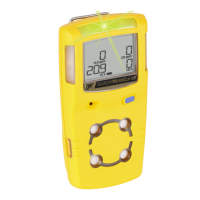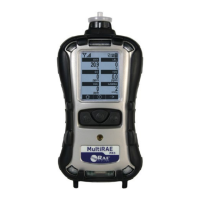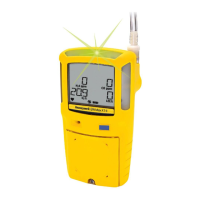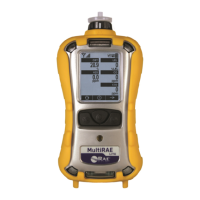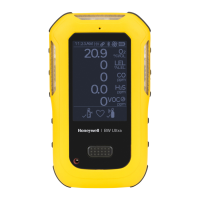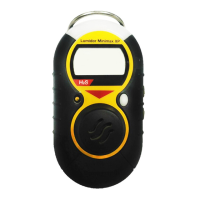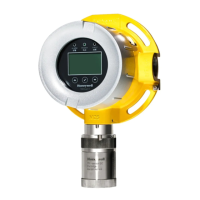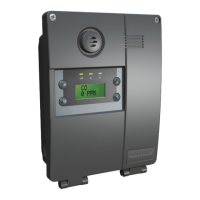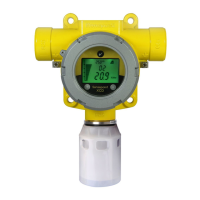10-5
10.2.2 Network Variable Behaviors
The behaviors of the network variables are as
detailed below:
nvoConc
This reports the concentration of the target toxic
or flammable gas in the SNVT_ppm_f data type.
The concentration will be scaled in ppm when a
toxic gas cartridge is installed. For example a 100
ppb B2H6 concentration will be reported as 0.1.
However, when an O2 cartridge is installed, this will
be scaled in volume percent. For example, normal air
will be reported as 20.9, not 209000.0. Furthermore,
concentration will be reported as a percentage of
the lower explosive limit (LEL) for flammable gas
cartridges. This means that CH4 at a concentration
of 50% LEL will be reported as 50.0, not as 25000.0
ppm.
Alarm Outputs
The alarm status of the Midas
®
is reported in three
network variable outputs (NVOs) for maximum
compatibility. The values of nvoAlmL, nvoAlm2,
and nvoAlmS under various conditions are listed
in Table 1. The variable nvoAlm2 is provided to
facilitate discrimination between alarm1 and alarm2
by 3rd party actuators which treat SNVT_lev_disc
as a Boolean data type. The variable nvoAlmS is
provided to increase compatibility with Echelon
LonPoint modules.
Note that the values stored in nvoAlmL are slightly
different than that of other Honeywell Analytics
/ MDA Scientific gas detectors. For example, a
Vertex will indicate a level 1 alarm by ST_MED.
This is because ST_LOW is reserved for small non-
zero concentrations below the alarm threshold.
Additionally, the System 16, LIFELINE, LIFELINE II
and CM4 indicate a level 2 alarm as ST_MED.
Table 10-1. Alarm Outputs
Alarm
Status
nvoAlmL
(SNVT_lev_
disc)
nvoAlm2
(SNVT_lev_
disc)
nvoAlmS
(SNVT_switch)
None ST_OFF ST_OFF {0.0, 0}
Level1 ST_LOW ST_OFF {0.5, 1}
Level2 without
Level 1 (only
possible with
depletion
alarms)
ST_MED ST_MED {1.0, 1}
Level 1 and 2
(usual case)
ST_HIGH ST_MED {1.5, 1}
nvoFaultD
This has the value ST_MED if an instrument fault
exists and the value ST_LOW if a maintenance fault
exists. If both faults exist, this takes ST_HIGH. It
has the value ST_OFF if no fault exists.
A maintenance fault indicates the Midas
®
requires
attention but is continuing to monitor. An instrument
fault indicates a loss of monitoring.
nvoFaultS
This network variable output facilitates identifying
the cause of the fault over the network. The .value
byte of SNVT_switch will be the fault number. These
are listed in Section 6 of the Midas
®
Quick Start
Guide. Additionally, a communication failure will
be reported as fault number 100. The .state byte
of SNVT_switch has the value 1 if any fault exists.
Otherwise it takes the value 0.
Note that the LonMark standard calls for the .value
field to be divided by two for display. Thus the raw
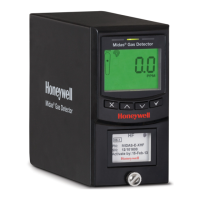
